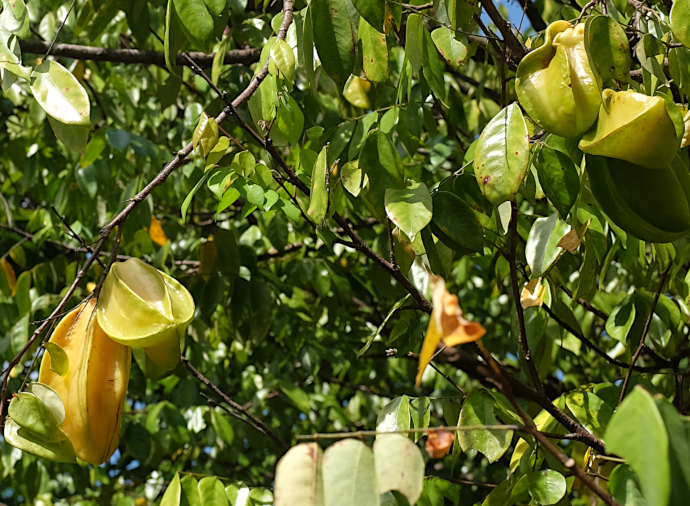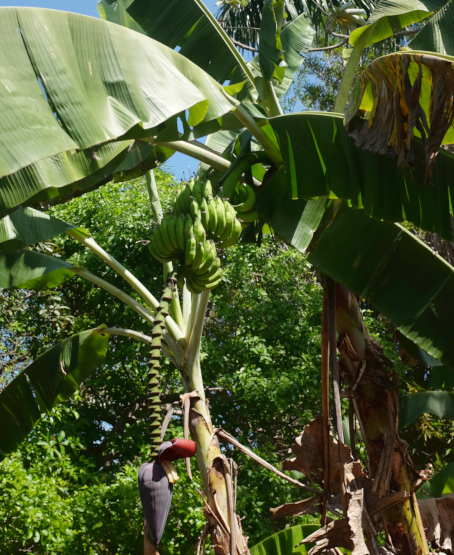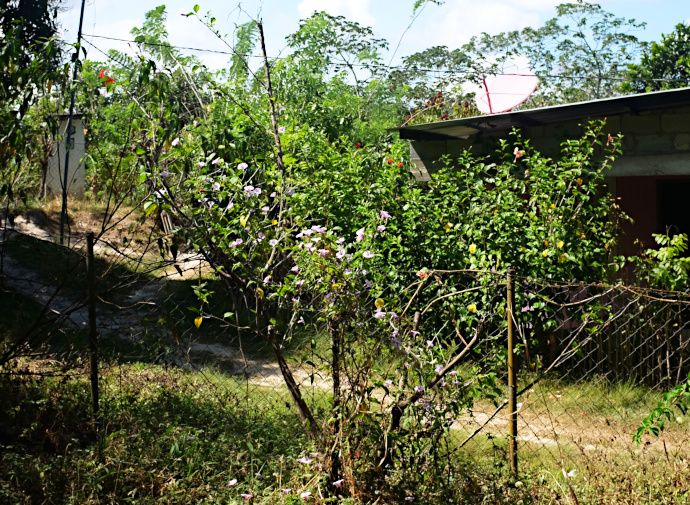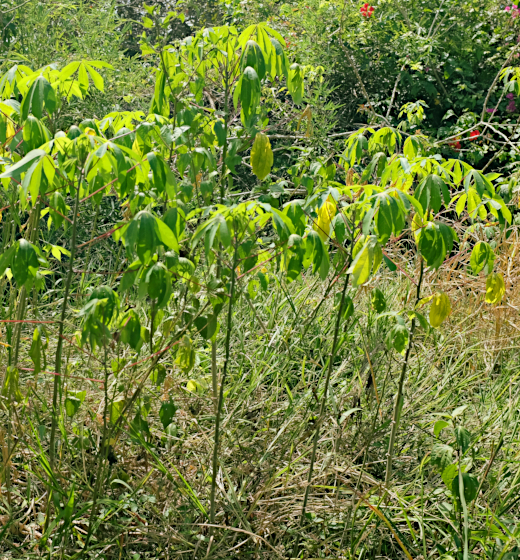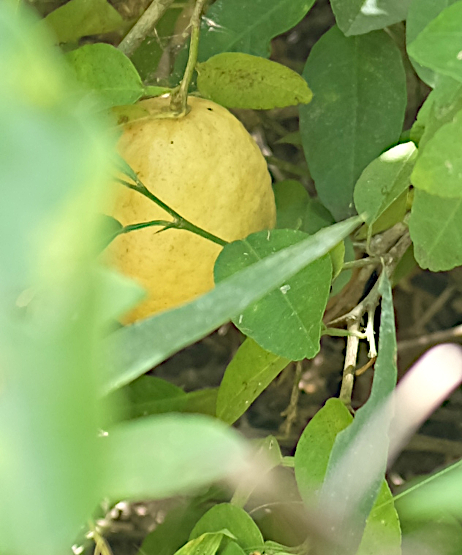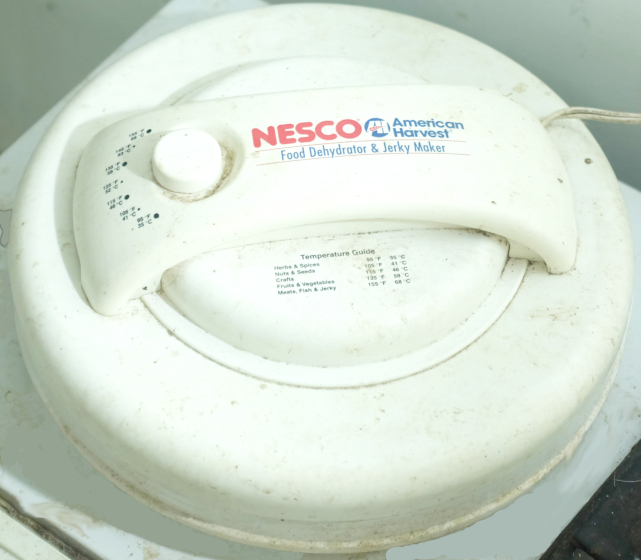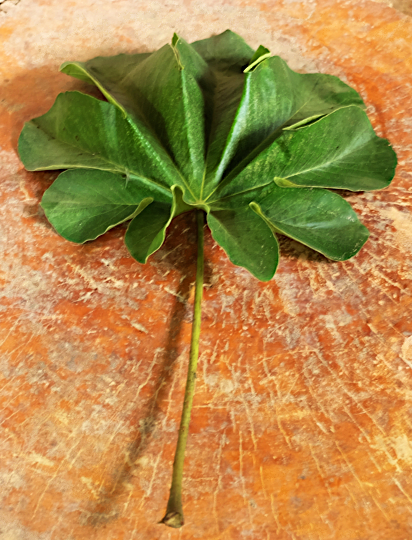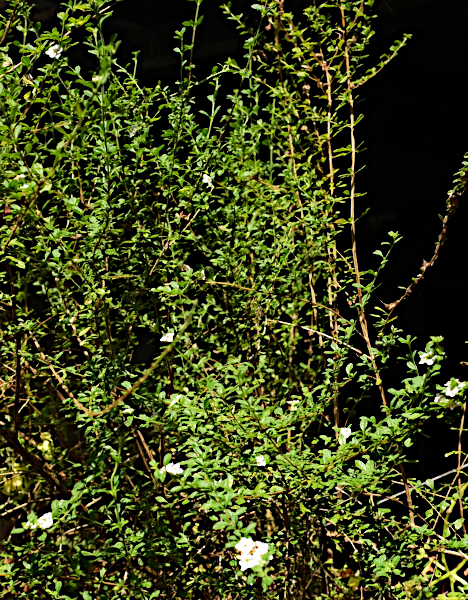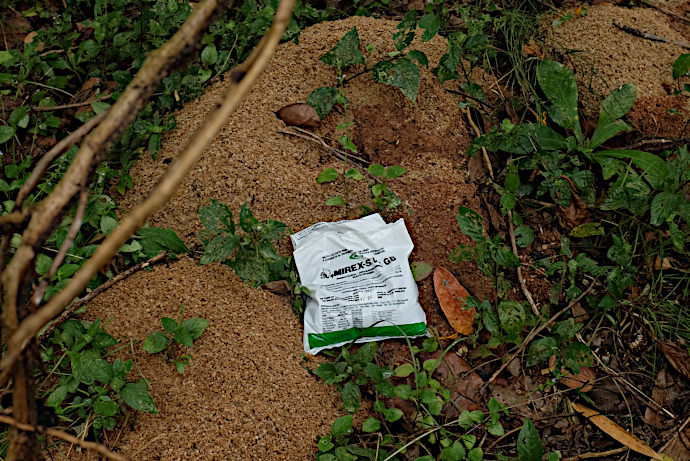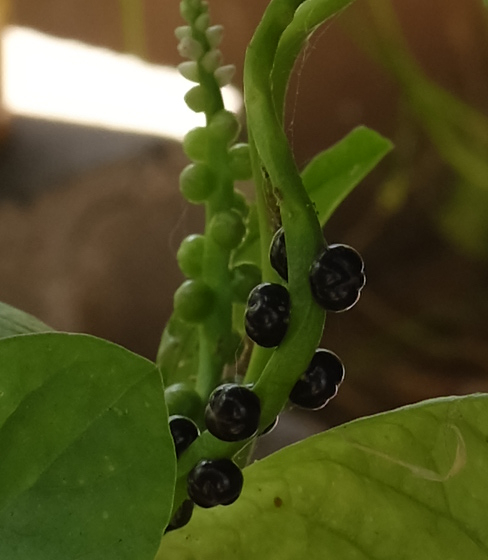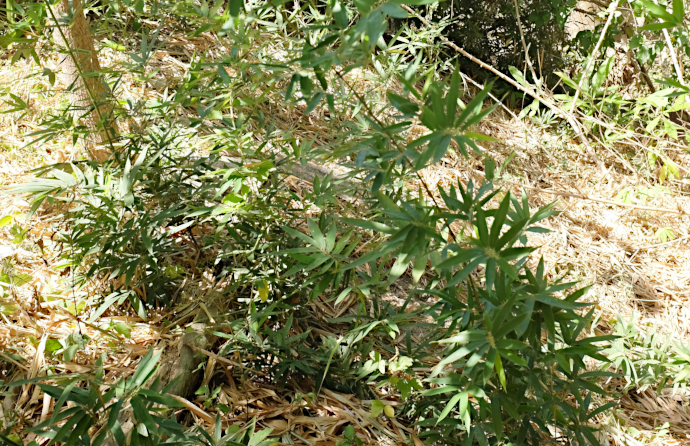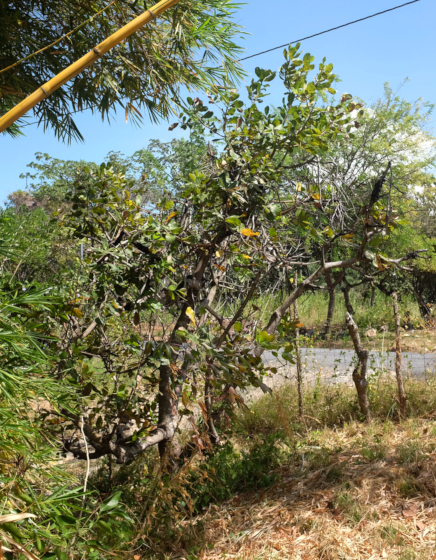Panama has a dry season — called “verano” in Panamanian Spanish — and a rainy season that encompasses most of the year, heavier toward its end. However, we don’t have a fall, in which most of the trees shed their leaves and after which the harvest of food crops pauses for some months. These little pink flowers, for example, indicate a dry season with “star apples” (in Zonian English, a/k/a carambolas, star fruit or fruta china) to pick.
When reporting, research and writing don’t pay much…
by Eric Jackson
…then in today’s economy many a journalist without a corporate boss will need a second job of sorts. For the guy who produces and edits The Panama News, that gig is as a Third World peasant on a 900-square-meter farm.
It’s out front and in the back, lazily and haphazardly, with as few chemicals and as little soil tilling as possible, letting grass and other clippings lie where they fall and compost back into the soil. Is it “organic permaculture?” It’s informed by that, anyway.
Out back
Those star apples keep coming for most of the year. Were the tree to be managed like on a cash crop farm, the fruit would be bagged to reduce insect and bird damage. But the increased fruit drop from those things? Either leave them where they fall or toss them in a spot where the soil could use a bit more compost. This is a lazy old hippie’s “second job.” And the fruit that does get picked? Mostly to eat, some to put up in canning jars and — especially not quite ripe pieces — some to be cut up to brew with tea for that extra fruity flavor.
A banana stem — not really a TREE — starts to lean over under the weight of flowers and fruit. Commercial farm efficiency might demand that the flower and that part of the plant between it and the ripening bananas be cut. Just waiting for the stem to fall over will suffice. What to do with the fallen stem becomes a matter for decisions and labor. Protecting the bananas from predation by bats as they fully ripen becomes an important little task. How many of the bananas will be coated in chocolate and tossed in the freezer? We shall see.
This mango tree is in the way because it threatens star apple and citrus trees that the editor finds more valuable. Not all in one chopping, the tree and its roots will be removed. These branches need to be cut some more. The wood may then LOOK haphazardly stacked but it will be placed to decompose into the soil and also to make the fence less attractive for kids to climb over in a few certain spots.
Does this sickly hibiscus shrub have a new life ahead of it? Leave it as is and it’s likely to die. Cut it way back, and stack wood from the mango tree and other organic detritus around it and it may eventually grow back, healthy and beautiful and adding to the farm’s privacy and security. That’s the bet, anyway.
The product of agricultural indolence: just tossing aside bits of yuca root or stems that were inconvenient to peel and cook for dinner — or in dire circumstances to feed the dogs, and give it a few months and these start to put down roots. These stems need to be cut down and stuck in the ground to grow. There are more of them than the editor can use. Want some yuca — or chaya — to plant? Under contemplation is a giveaway in exchange for whatever folks want to donate to The Panama News.
The 2022 lemon harvest isn’t ENTIRELY over just yet.
This food dryer will be used not only for things grown on this farm, nor just for things to eat.
Guarumo, a variety of cecropia, grows on the property and might be boiled fresh or dried to be boiled later to make a medicinal tea. There are many claims made about it, some medically tested and verified. In general its anti-inflammatory properties are most often the reasons it is used.
In front
The front porch has planter boxes that are mostly shaded by some palm trees out front, a flat little side yard with bananas, chaya and sunflowers, and a larger, sloping side yard with bamboo stands of two species, a dwarf coconut tree that’s producing after many years, and various other plants. Some of the planting on that side is to produce food, but a lot of it is to prevent erosion.
The Mexican oregano (Lippia graveolens) is now flowering in one of the planter boxes. Time to harvest and dry leaves and cut it back to grow another year’s crop instead of the plant dying. In the wake of a June 2021 attack on my home and person by five maleantes there was this prosecutor trying various devices to make that case that I was the criminal who needed to be removed. A cop was sent to inspect my garden. Alas, no ganja weed, no coca bushes, no opium poppies, no magic mushrooms. I welcomed him in and showed him around, and when I said Mexican oregano he pointed out that it isn’t true oregano but a species of verbena, and that the Cuban oregano that I grow near the front fence is a species of coleus rather than true oregano. A gardener, he seemed to be, and one who explained to his colleagues that they were dealing with this odd old Zonian, not some drug lord. Or did he just say that to keep me off my guard?
In the front corner of the smaller side yard, street construction has altered the leaf cutter ant habitat. That area has been a problem anyway, due to neighbors who cut and burn the vegetation on their property and also from time to time have someone spray herbicides on it. It makes for ant-friendly soil. Ants have no respect for lot lines or fences, will strip my garden to fertilize theirs, and this normally organic old hippie has such disrespect for these actually amazing underground fungus farmer insects that one scheduled task is chemical warfare. Death to the fascist insects!
We get to the end of a year’s spinach crop. I’m tossing the ripe seeds across the fence among and in front of the palms that give me some shade and privacy. The hope is for spinach growing as a weed there. Just in case, I will make a few cuttings and put them in bottles of water to root.
Some of the “little bamboo,” an unwanted weed in this spot but a vital home defense a few feet behind. The lady who owned this property before me is an artist, and environmentally wise. Got a distorted notion of football players and their college majors? Underwater basket weaving isn’t done with scuba gear, but with a sink. As in the bamboo is cut, the leaves are stripped away, and the grass is allowed to dry. Then worked in a tub full of water as wet, flexible material to be woven, and when the weaving is done, taken out and allowed to dry and harden. The football star who’s really good at this will have a lifetime in the arts to look forward to after playing days are over. But this bamboo species was planted on one side of the house as a privacy hedge and on the other for erosion control — to keep the house from sliding down the hill. The stuff spreads to where it’s not wanted, and on the one side there’s surely some to harvest if there is an interested underwater basket weaver who wants it. As in, machete work.
The blight that has killed so many cashew trees is killing mine, so this is axe work exercise to come.
Contact us by email at fund4thepanamanews@gmail.com
To fend off hackers, organized trolls and other online vandalism, our website comments feature is switched off. Instead, come to our Facebook page to join in the discussion.
These links are interactive — click on the boxes

